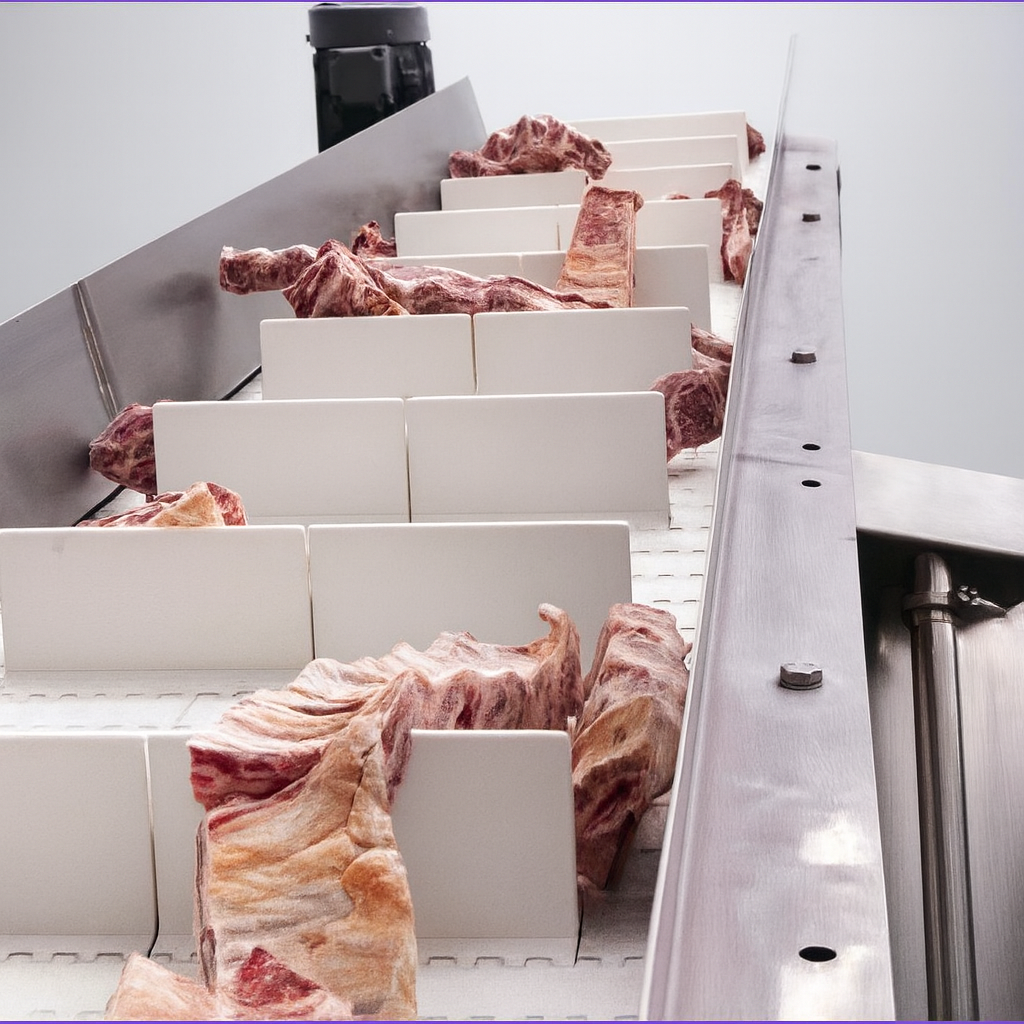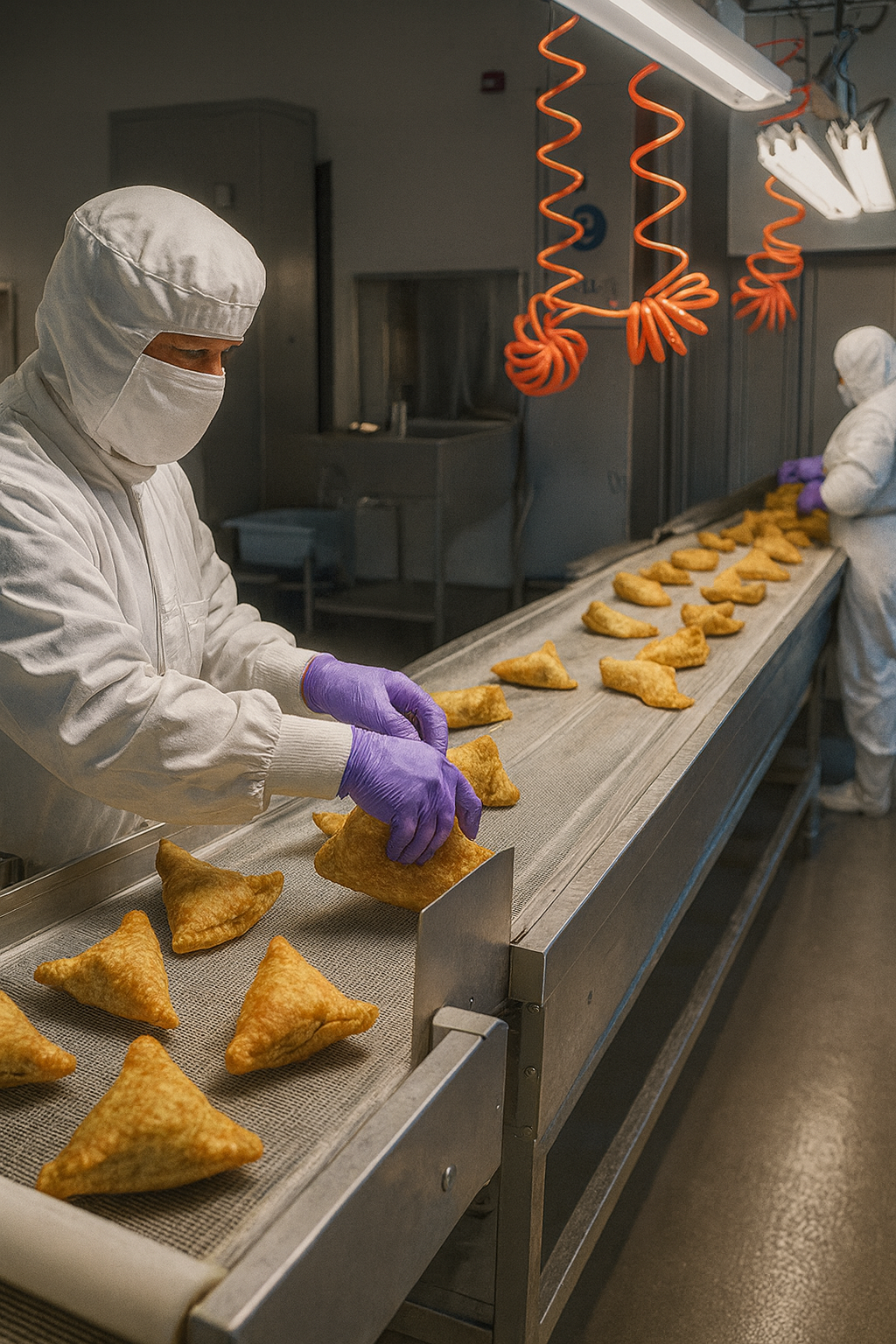Introduction
In the modern food industry, two pillars determine a company’s success: production efficiency and food safety. From raw material processing to final packaging, every step relies on high-performance, hygienic automation. At the heart of this ecosystem lies the food-grade conveyor system—the “artery” that keeps production flowing.
A well-designed conveyor not only improves throughput and reduces labor costs, but also prevents cross-contamination and ensures compliance with global safety standards like HACCP, FDA, and EU regulations. With rising consumer expectations and stricter international oversight, food conveyors are no longer just mechanical transport devices; they are engineered solutions integrating materials science, hygienic design, microbiology, automation, and regulatory compliance.
This blog provides a complete framework for designing food-grade conveyors, covering material choices, hygienic construction, safety features, and best practices across industries.

What Makes a Conveyor “Food-Grade”?
Unlike conveyors in logistics or mining, food conveyors prioritize hygiene over sheer load capacity.
Core Differences vs. Standard Conveyors:
- Materials: All contact parts must use certified food-safe stainless steel (304, 316L) or plastics (PU, PE, POM).
- Hygienic Design: Surfaces must be smooth, free from gaps or dead zones. Open frames, rounded edges, and easy disassembly enable thorough cleaning.
- Cleaning Compatibility: Components must withstand high-pressure washdowns, chemicals, and steam. IP67/IP69K-rated motors and sensors are common.
- Cross-Contamination Prevention: Dedicated conveyor paths, allergen separation, and non-porous belts reduce microbial risk.
Key Design Principles
1. Material Selection
- 304 Stainless steel : Cost-effective and compliant for dry goods and general processing.
- 316/316L Stainless Steel: Superior resistance to chlorides—ideal for seafood, sauces, and salty foods.
- Plastics: PU belts are smooth and anti-bacterial; modular POM belts are durable and easy to replace. Blue POM modules provide visual detection against food products.
Surface Treatment:
- Food contact surfaces should have a roughness (Ra) <0.8 μm.
- Welds must be continuous and polished.
- Avoid paint or coatings on contact areas.

2. Hygienic Engineering
- Cleanability: Quick-release belts, tool-free disassembly.
- Open Frames: No hollow tubing—prevents hidden bacteria growth.
- Drainage: Sloped surfaces to avoid water pooling.
- Seals and Gaskets: Use food-grade silicone or EPDM, easy to replace.
3. Safety Features
- Operator Safety: Guards, interlocks, and emergency stops.
- Food Safety: Integration with metal detectors and X-ray systems.
- Ergonomics: Proper working height, reduced noise, easy maintenance.
Conveyor Types in Food Processing
| Conveyor Type | Main Advantages | Applications |
|---|---|---|
| Belt Conveyor | Smooth, versatile, economical | Snacks, bakery, packaged goods |
| Modular Belt Conveyor | Easy cleaning, good drainage | Meat, seafood, cooling lines |
| Chain Conveyor | Heavy load, stable transport | Bottles, jars, cartons |
| Screw Conveyor | Enclosed, dust-free, precise dosing | Flour, sugar, powders |
Industry Best Practices
- Dairy: CIP cleaning systems, 316L stainless steel, sterile designs for UHT lines.
- Meat: Open-frame conveyors, color-coded belts, strict separation of raw vs. cooked zones.
- Bakery: Heat-resistant belts (PTFE, silicone), spiral cooling towers for space-efficient cooling.
Common Challenges & Solutions
- Wrong Material Choice → Early Corrosion: Always verify FDA/EU/GB 4806 compliance certificates.
- Hygienic Dead Zones → Bacterial Growth: Use rounded corners, eliminate hollow tubing.
- Cleaning Inefficiency: Validate SSOPs, train staff, integrate CIP systems.
- Unplanned Downtime: Adopt predictive maintenance via IoT sensors.
Future Trends
- Smart Conveyors: IoT sensors, AI algorithms, predictive maintenance.
- Sustainable Design: Energy-saving motors, recyclable plastics, anti-microbial surfaces.
- Modular Systems: Lego-style reconfiguration for flexible food production.
Conclusion & Call to Action
Investing in a well-designed food-grade conveyor system is not just about compliance—it’s about brand trust, consumer safety, and operational efficiency. Whether you need belt conveyors, modular conveyors, bucket elevators, multihead weighers, VFFS machines, or full turnkey packaging solutions, Fill-Package provides equipment engineered for hygiene, reliability, and scalability.
👉 What’s your biggest challenge in conveyor hygiene or food packaging automation? Leave a comment or reach out—we’d love to help design a solution that keeps your line efficient and your customers safe.
📩 Learn more at www.fill-package.com

